The second part of our Saudi Arabian tour was centered on the town of Hail. On the second evening we drove from Al Ula 260 miles about 4-1/2 hours to Hail. It was dark during the drive, but we did not miss much in the way of changing scenery. From what we could see it seemed like more stark, dry land with scrubby bushes. Putting it on the map, link, zoom in
We passed through one very small village where we stopped at a truck stop for a bathroom break and to buy water and snacks. Our guide was very protective of the girls, saying that women would not typically be out at this time of night. We had to wait for him to usher us into a convenience store where we picked out some snacks (and happened to notice another woman in full abaya and niqab in the store) then we immediately went back to the car while he paid; an unsavory bunch were hanging around the shop with curious eyes, but it didn’t feel threatening.
Hail has a population of 350,000+ people. It is primarily an agricultural town where a large percentage of the kingdom’s wheat is grown, with date and fruit farms in the area too. There are also a number of camel farms for the production of camel milk around the city. Historically Hail became wealthy from being on the camel caravan route for groups traveling to Mecca for the pilgrimage. It is well known around the Arab world for the generosity and hospitality of its people. They welcomed people from many different backgrounds. The Emirs during the 18th and 19th centuries were more tolerant towards foreign traders and visitors. During this time Saudi was made up of several different sects that followed different schools of Islam many of whom did not get along with each other. But the people and emir of Hail were more accepting. The city fell from importance in the early 19th century with the advent of railroads and steamship travel now being used to transport people and goods. Today the city is again prospering as the center of Saudi Arabia’s agricultural program.
What has also helped the city was the opening of a community college in 1998, Hail Community College. In 2006 the University of Hail was officially established, it now has 7 colleges, Medicine, Pharmacology, Science, Engineering, Computer Science, Computer Engineering, Education and just recently opened a girl’s college of education. The university now enrolls over 32,000 students.
There are several historical sites to visit in the area, unfortunately the main site was closed. The one man who is the supervisor for the Jabbah ancient rock carving center had gone on vacation the day before. It was surprising to us that no one could fill his place while he was away! The rock carvings and art go back to the Neolithic period some 7000 to 9000 years ago and is said to be in terms of concentration and importance the number one site in the whole Middle East. You can imagine our disappointment. Even the tour operator had no idea of the closing. This gives you a good example of how under developed the tourist industry really is in Saudi. Going to this site filled three quarters of a day, so the guides had to scramble to find other things for us to do. Of course the remaining historic sites were poorly maintained and of little importance in the scheme of things.
On the flip side the overall time spent with the guides was eye opening for the girls. We had lots of time during our long car rides and traveling from site to site to ask many questions to our Saudi guides. In all we had 3 different guides, one retired gentleman and two younger men one in his early twenties and the other in their older twenties.
I need to give you a little background on life in Saudi Arabia. There is a great division in all aspects of life between men and women. As children the boys and girls of your extended families play together, but once they reach puberty they can never socialize or really talk to their cousins of the opposite sex ever again. At almost all social functions including at mosques, restaurants, weddings etc the men and women are separated. In professional situations, Saudi men and women can interact the bare minimum to get their jobs done, but most places do not hire mixed Saudi teams.
As tour guides they were allowed to talk with women, and being non-Muslim westerners it appeared the rules were less strict. We asked many, many questions about all aspects of life living in Saudi Arabia. Interestingly they were very candid with us. It was one of those rare opportunities for the girls and me to ask about the day-to-day why’s and how’s of this unique culture.
There is one last thing I will mention. We were tracked everywhere we went – apparently for our safety. In Al Ula the hotel like every hotel when traveling abroad takes copies of your passports. Also in the smaller city of Al Ula we were told the details of our whereabouts were passed on to the local authorities each step of the way. In Hail, because it is a larger city, a plain-clothes police officer with a handgun in the pocket of his thobe was assigned to follow us around everywhere we went. When we went into the souk, up to the fort, into the relic museum, on the hike, at the picnic, he was always a few paces or a few yards behind – on foot or in his little beige pick-up truck. At first it was a little nerve racking but very quietly he became our friend and by the end he joined in some of the actives. He even gave each one of us a departing gift.
Next up: going to Dubai, a glittering place that does everything over the top.
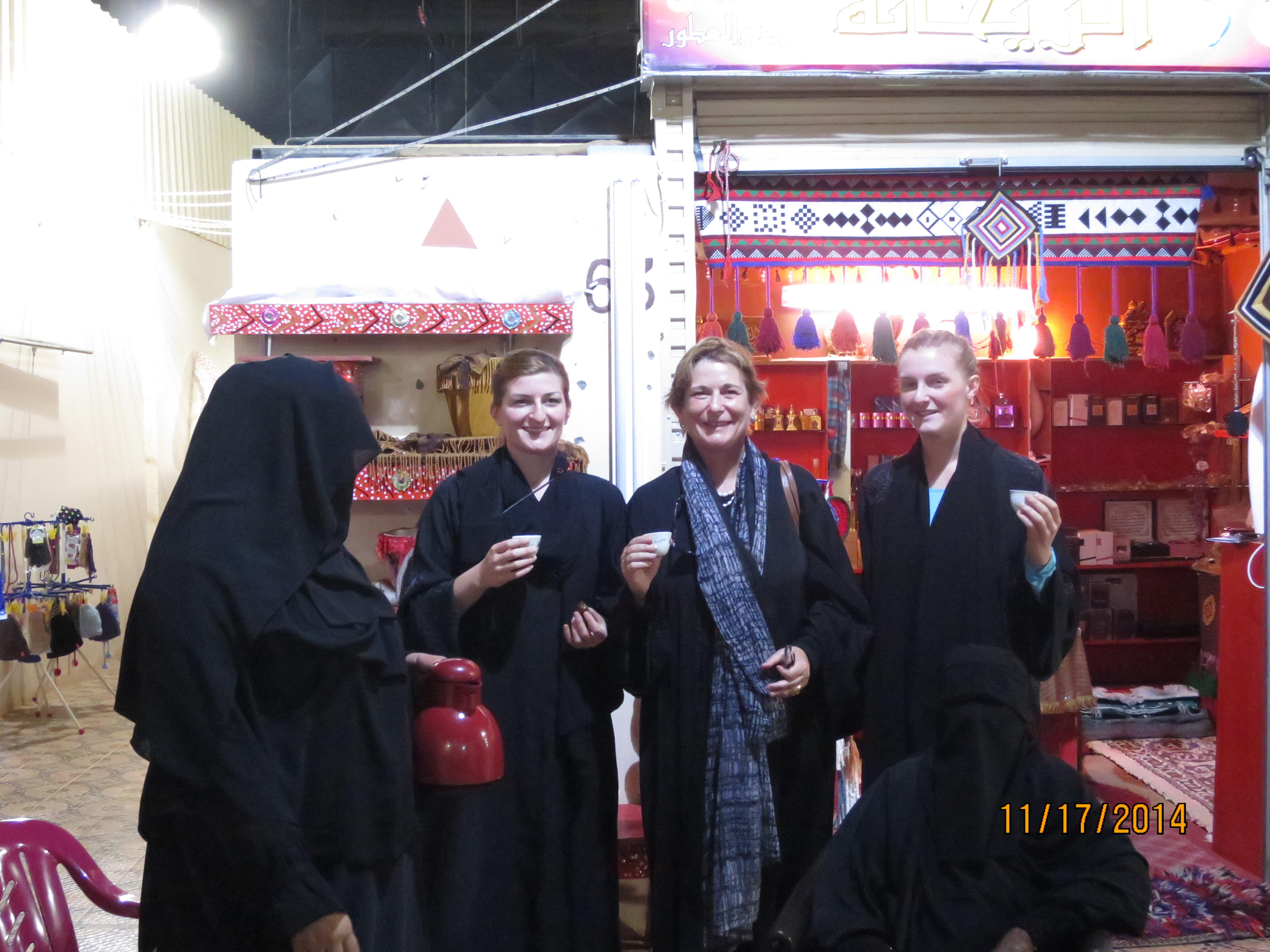
we stopped at a souk(market), these two ladies offered us tea, I asked to take pictures, they agreed but insisted on covering there faces
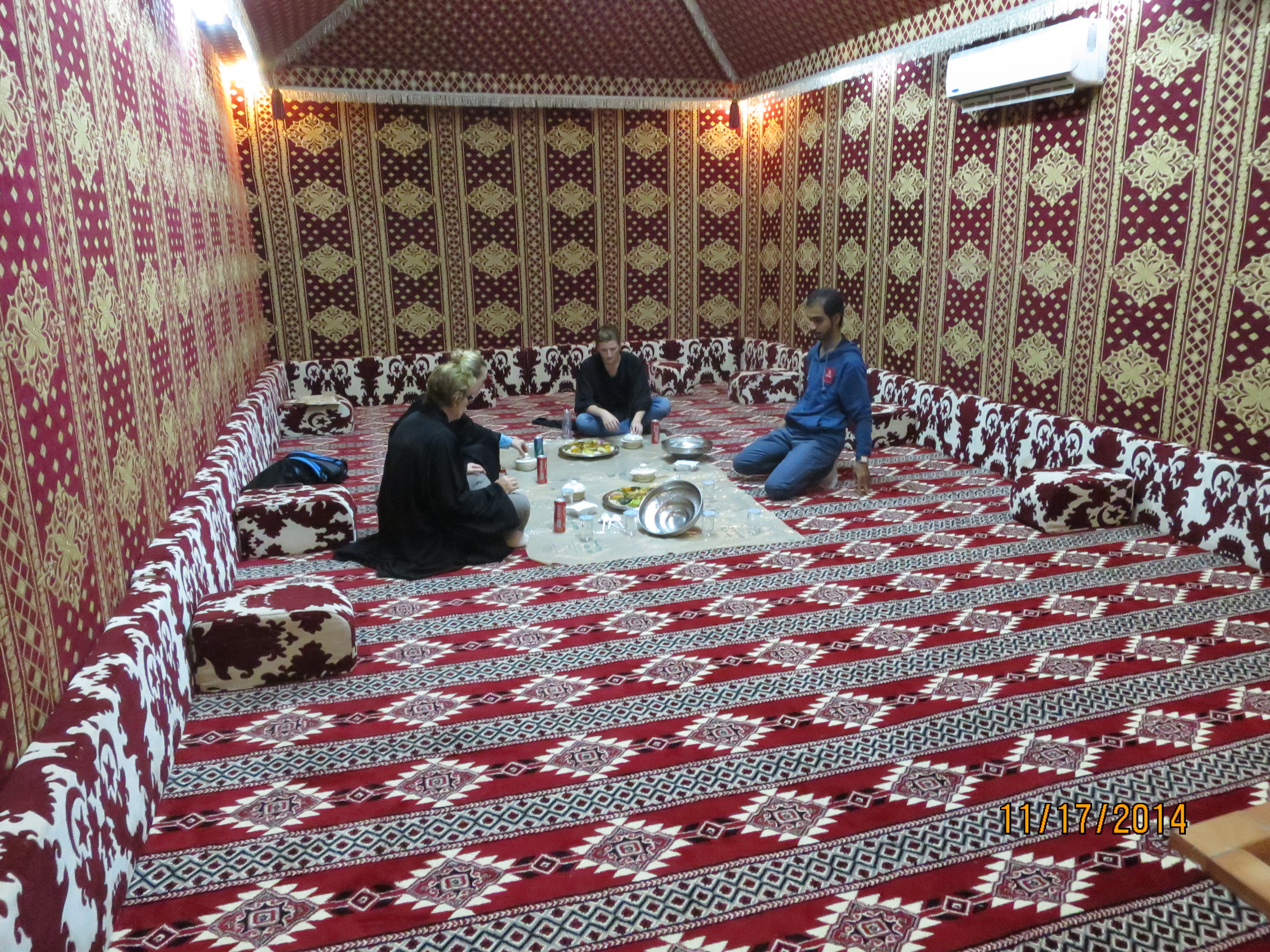
we had a traditional meal for lunch at a long established restaurant, groups were put in rooms to eat
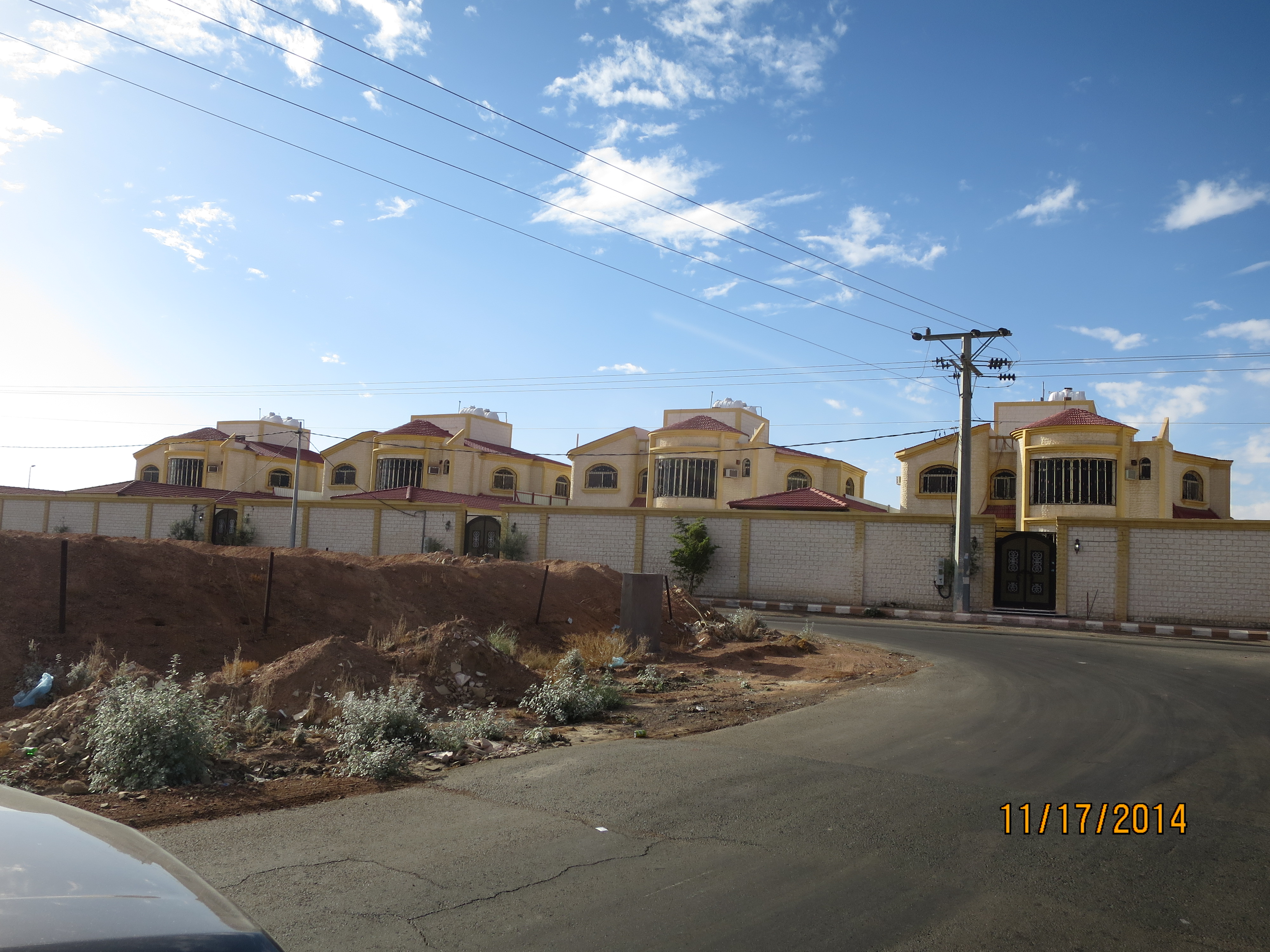
compound with four identical homes, Saudi men can marry up to four women, the law states that he has to provide each with the same homes etc.



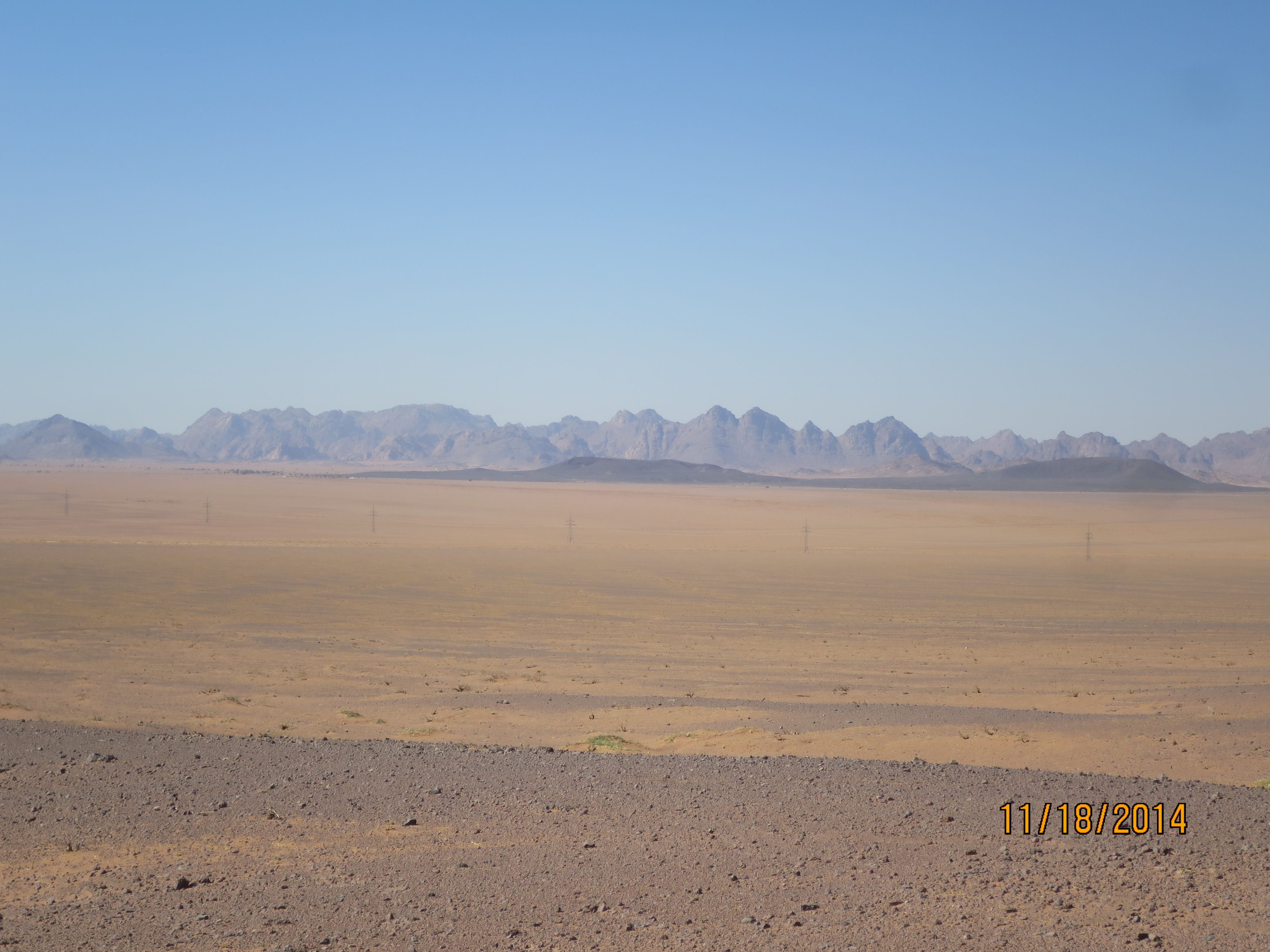
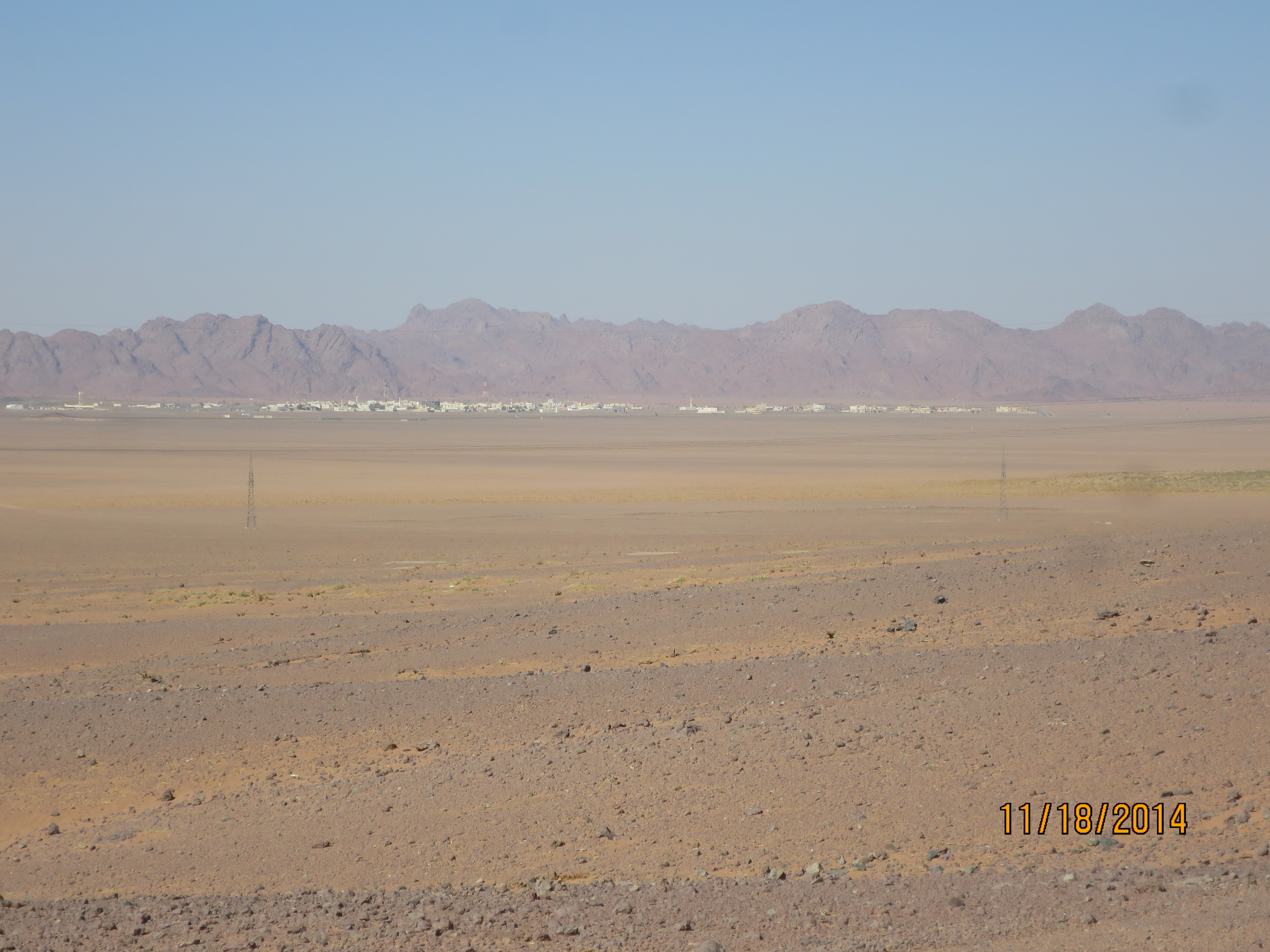
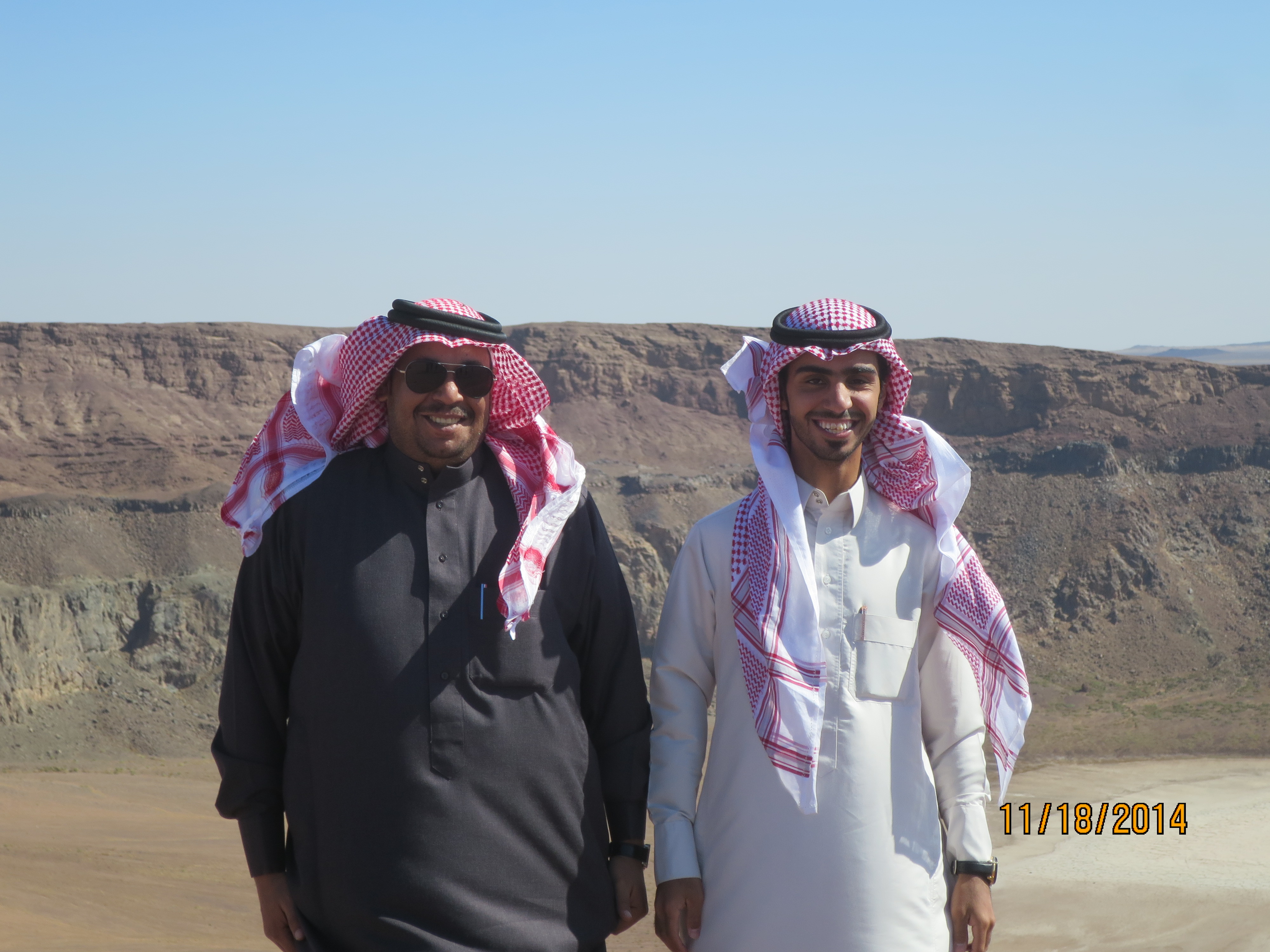

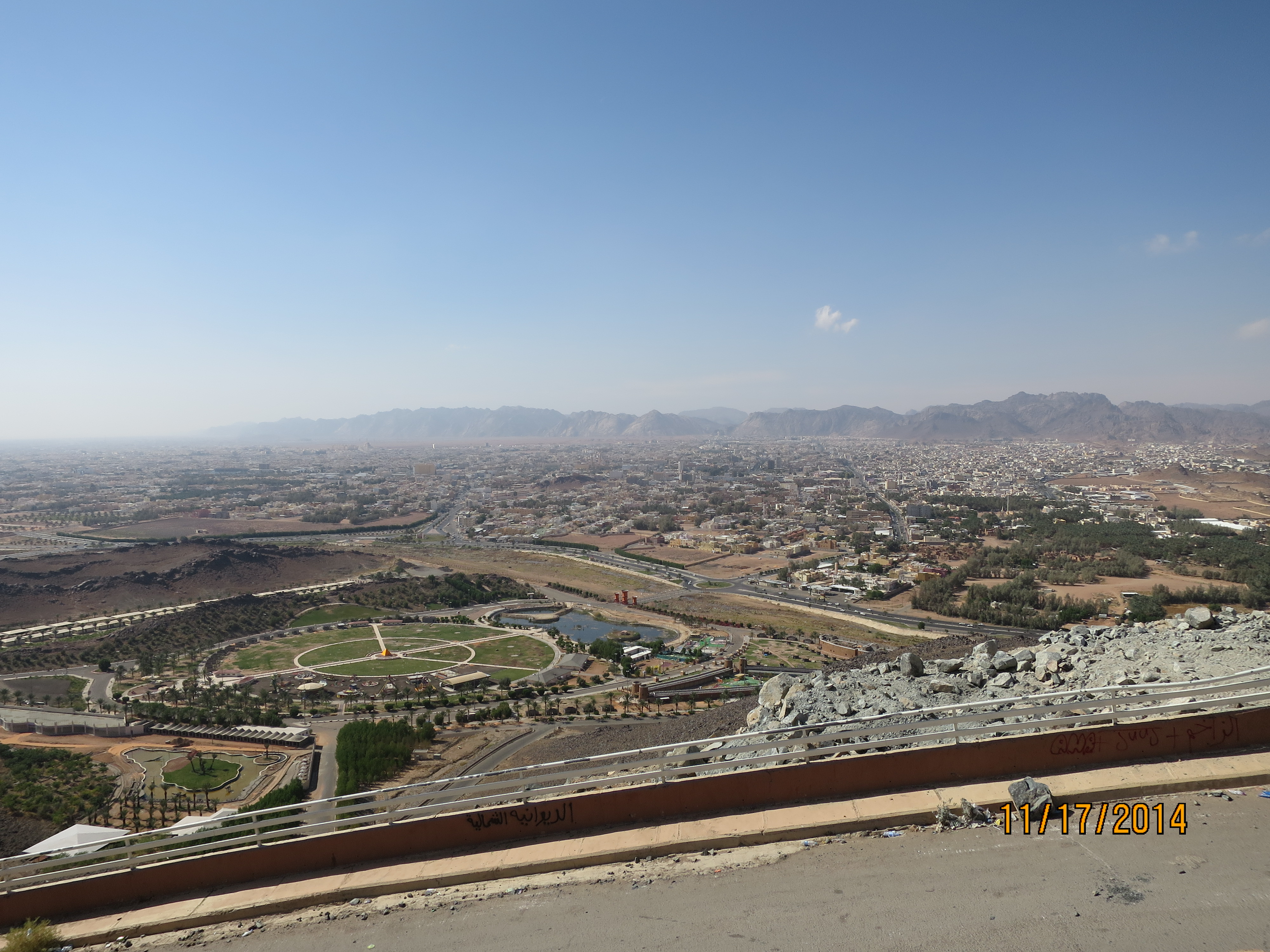
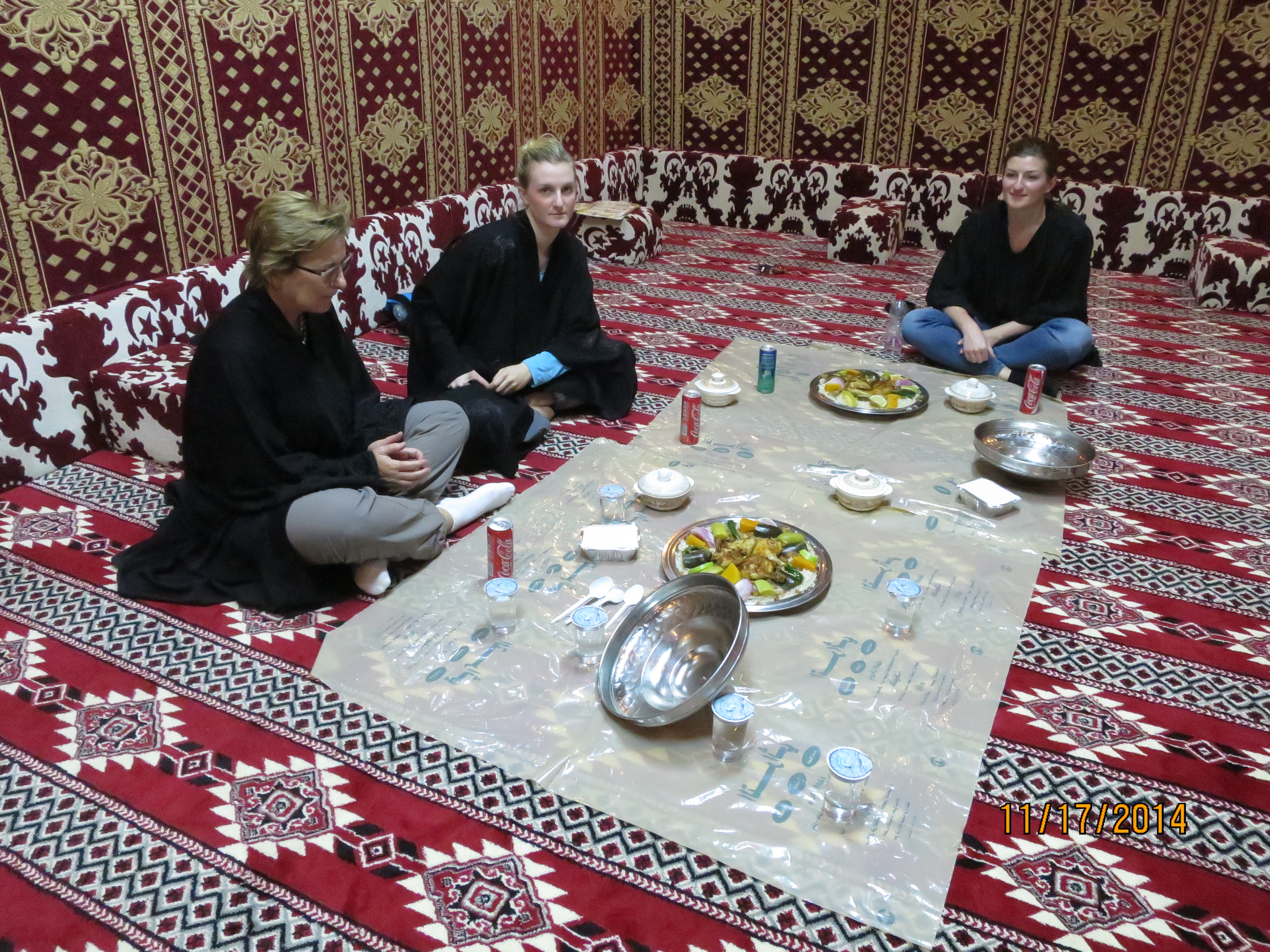
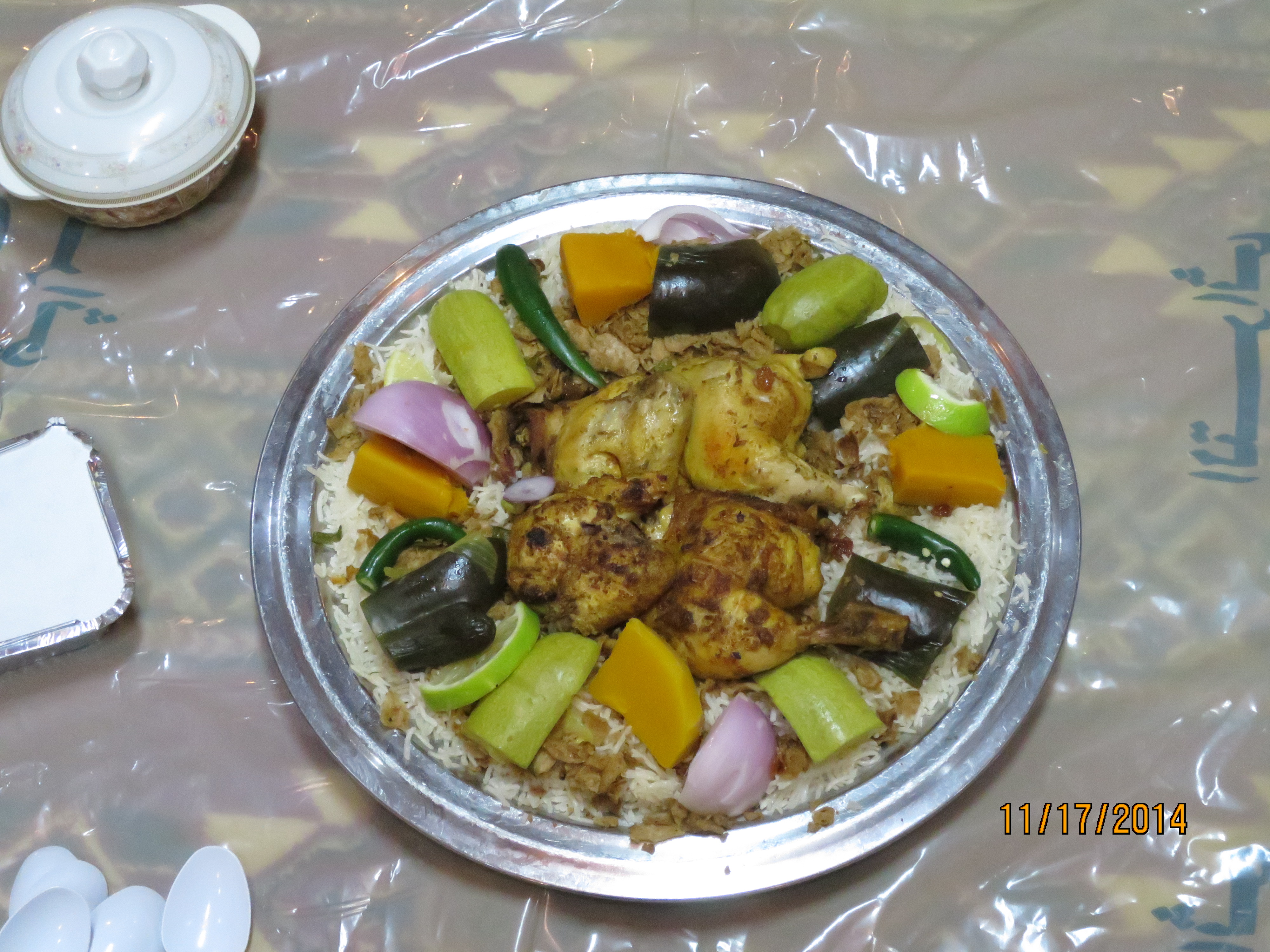
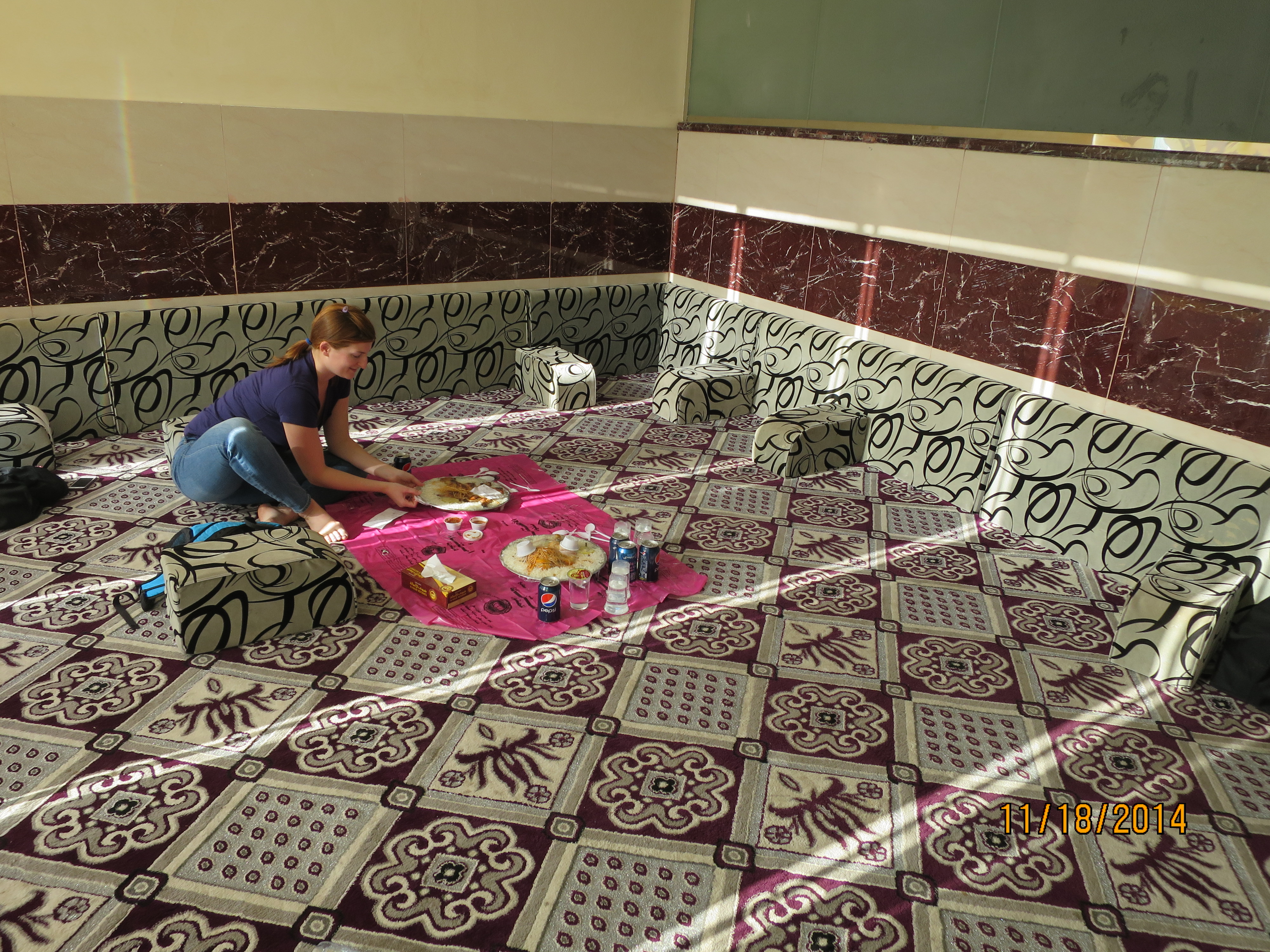
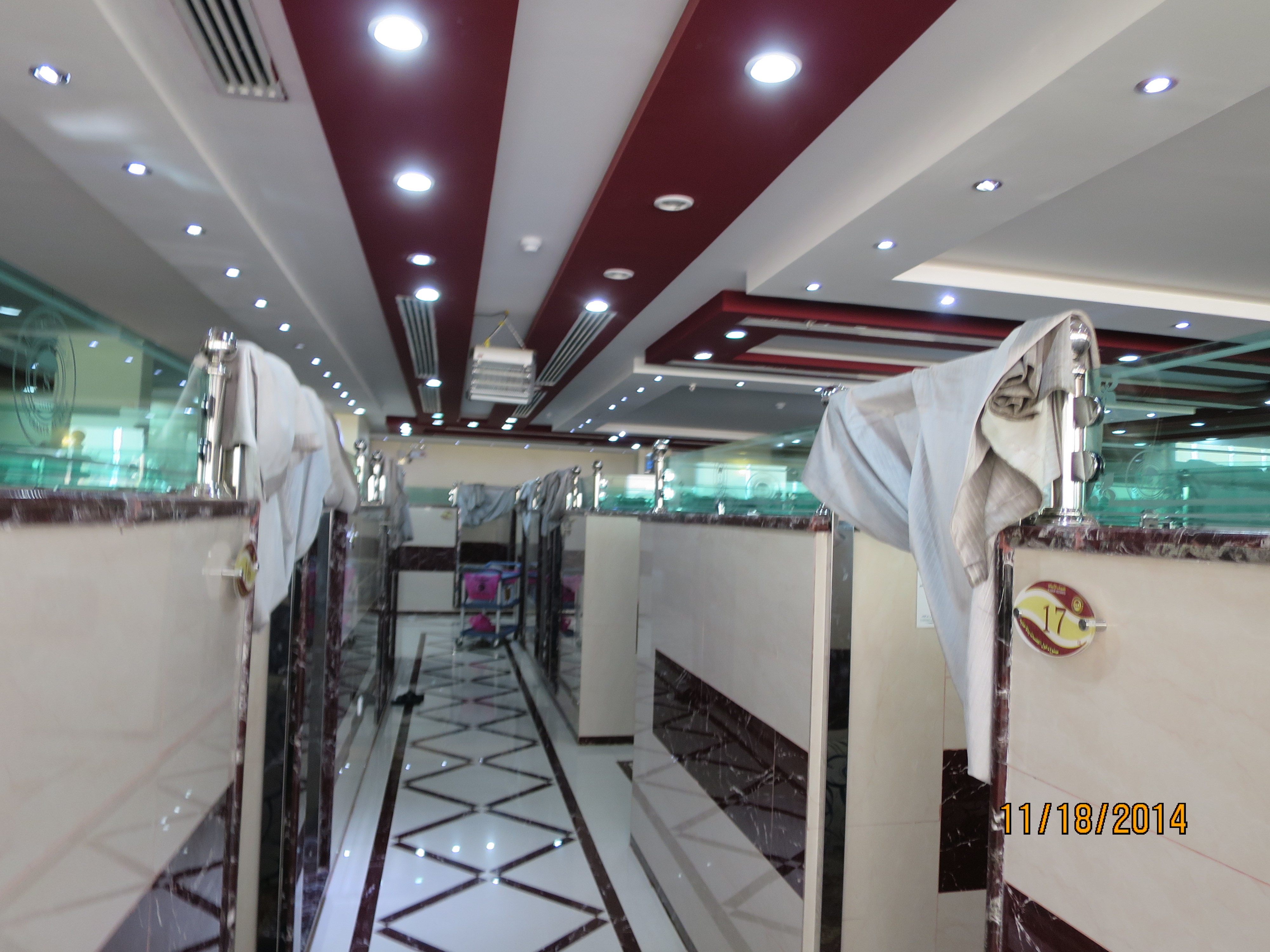
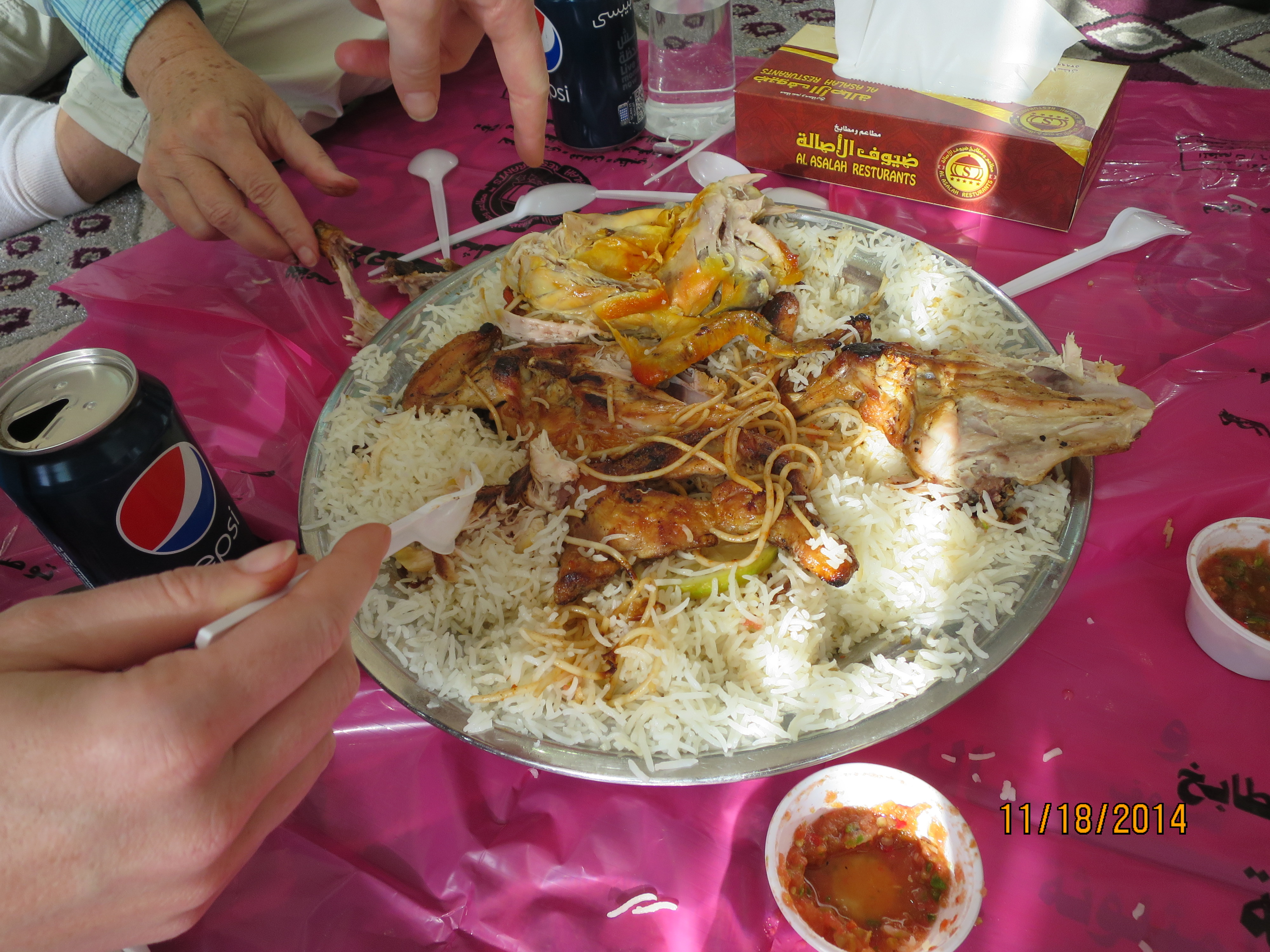
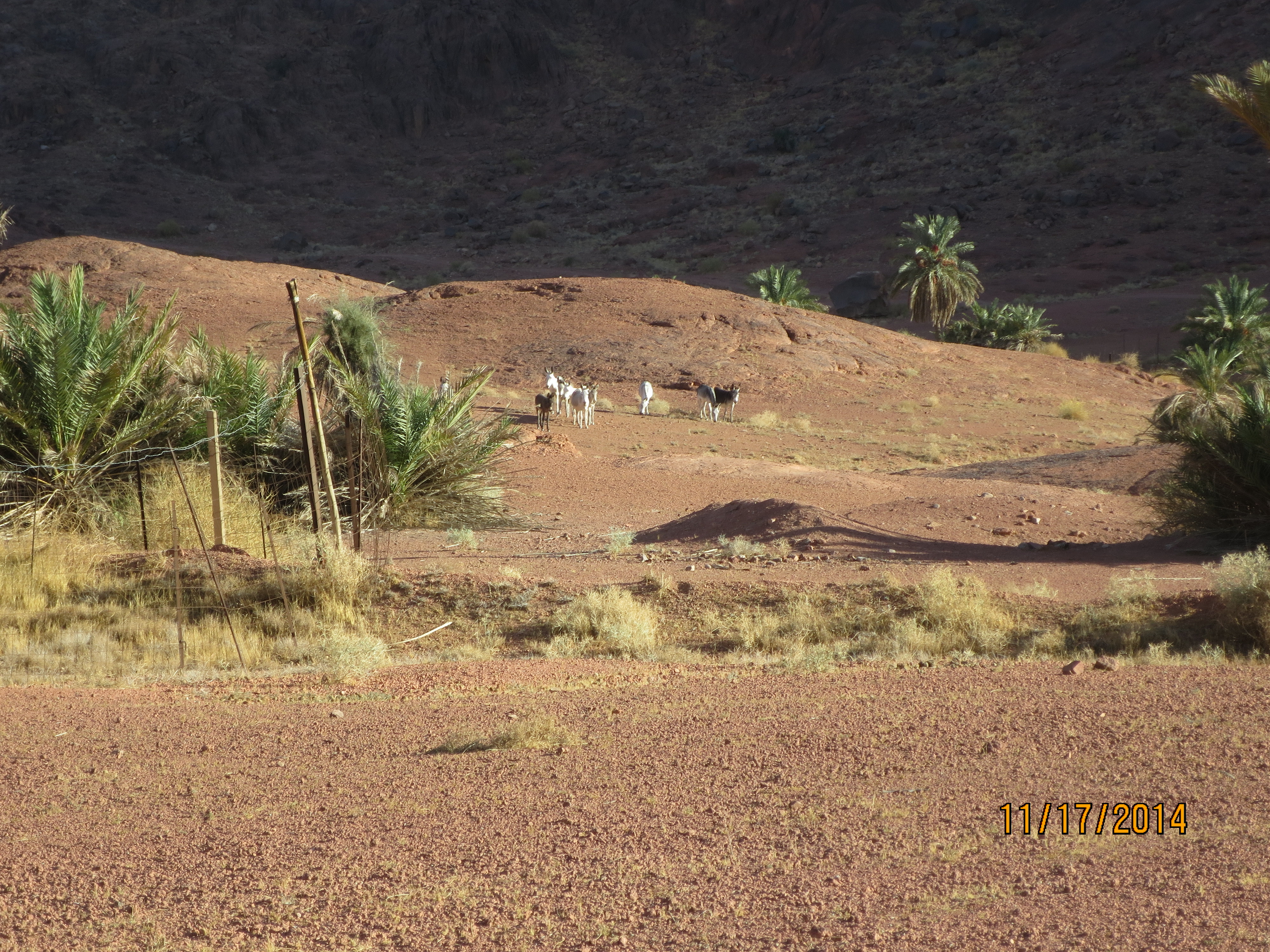
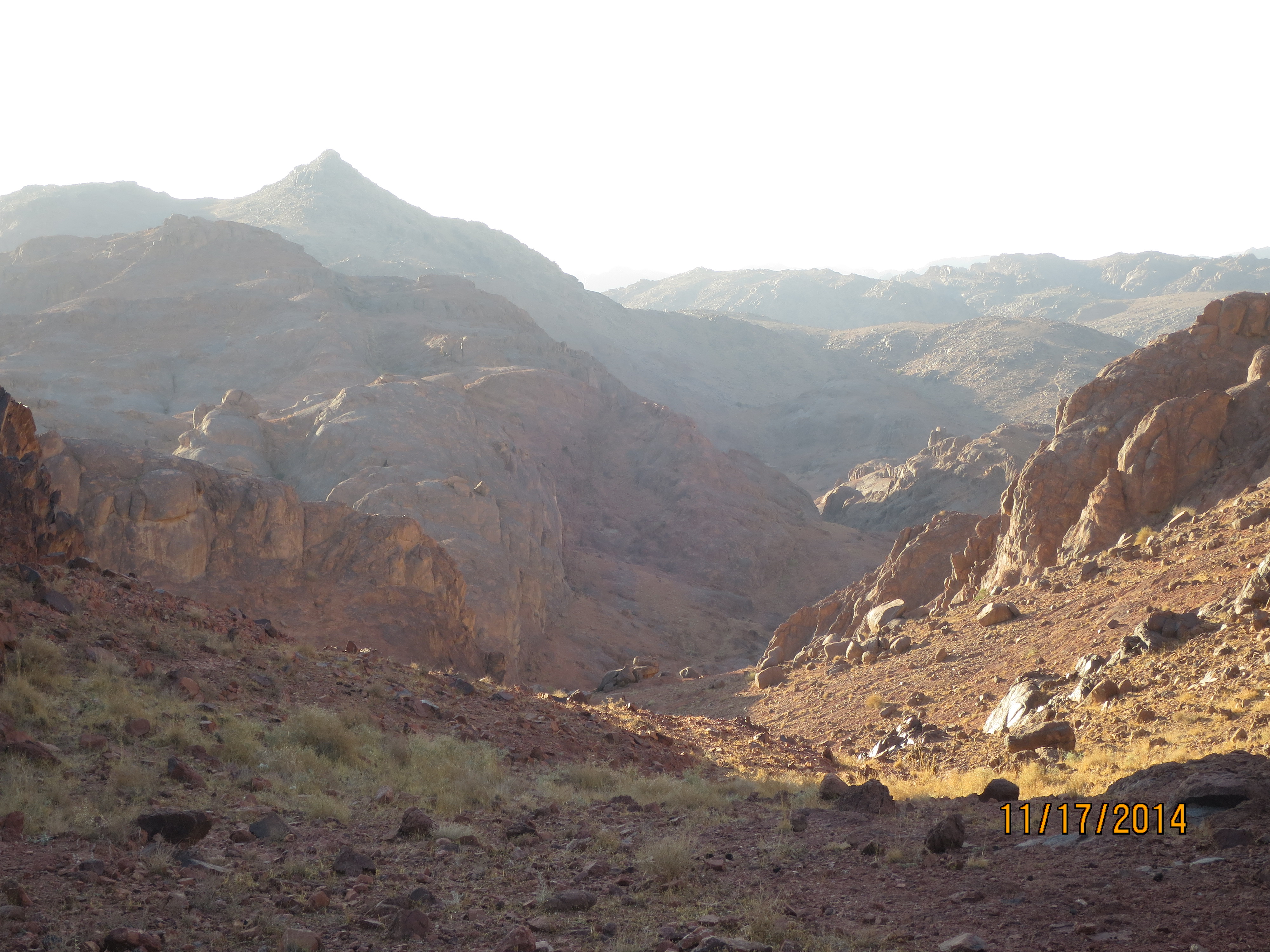
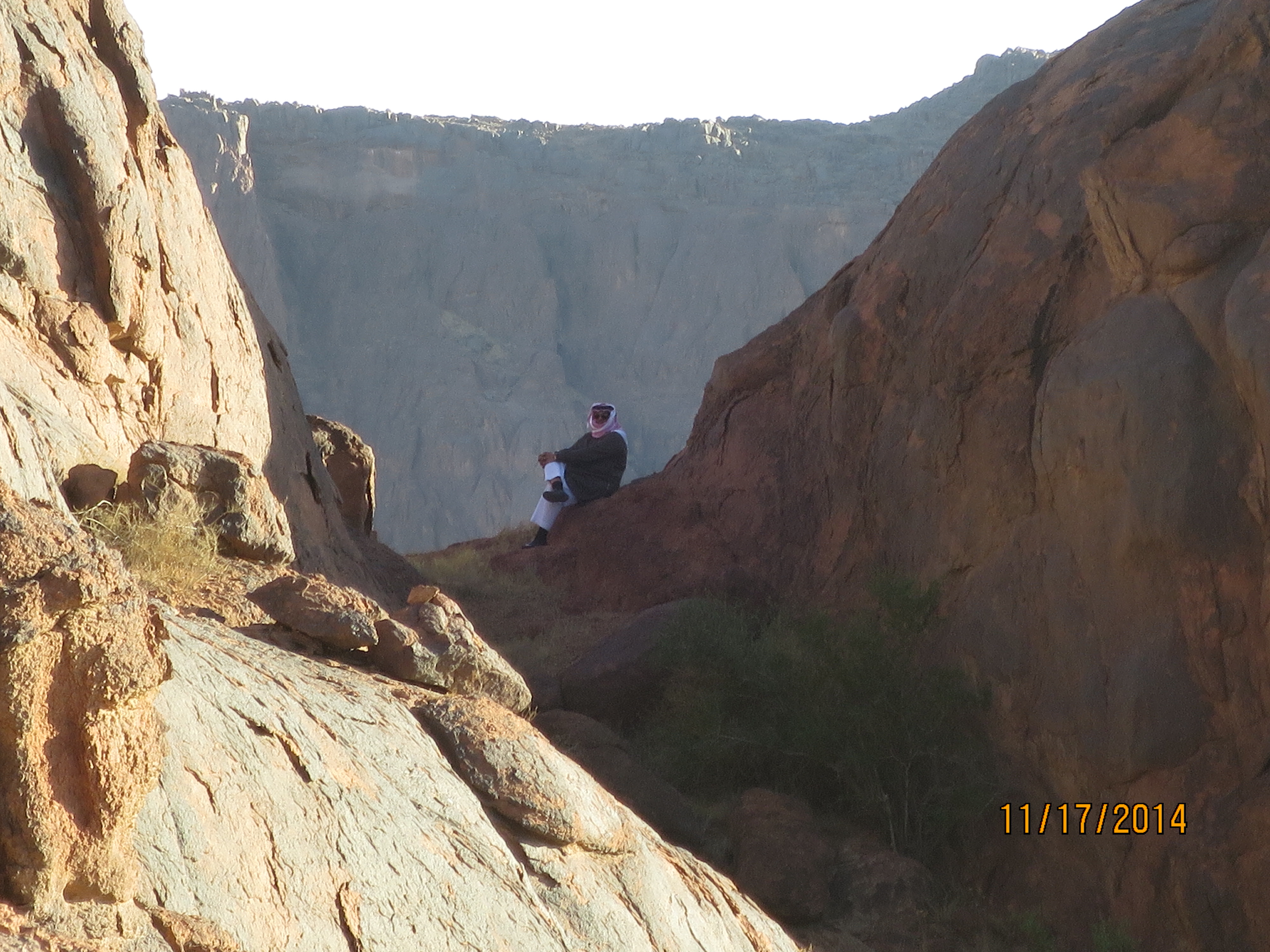
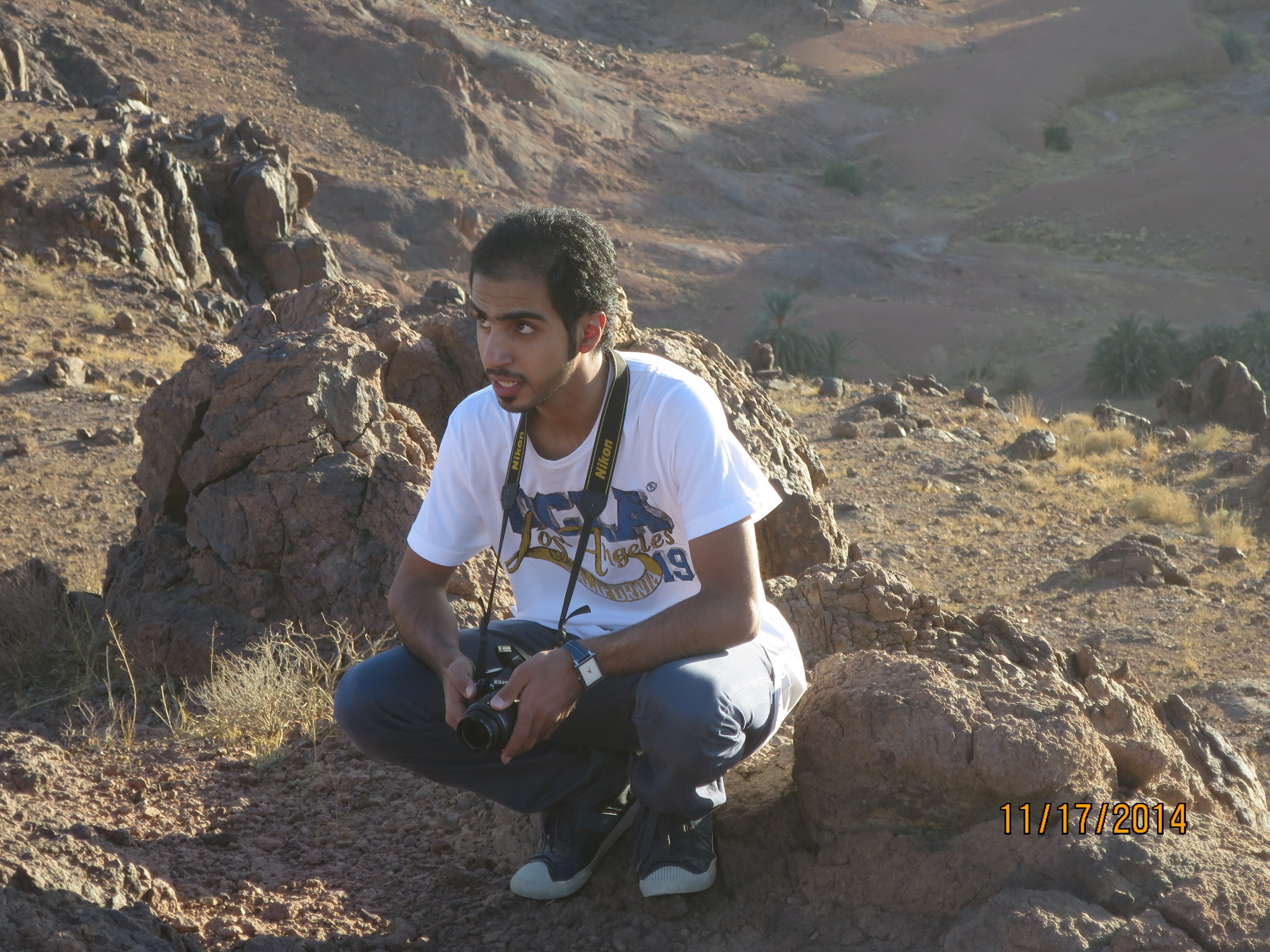
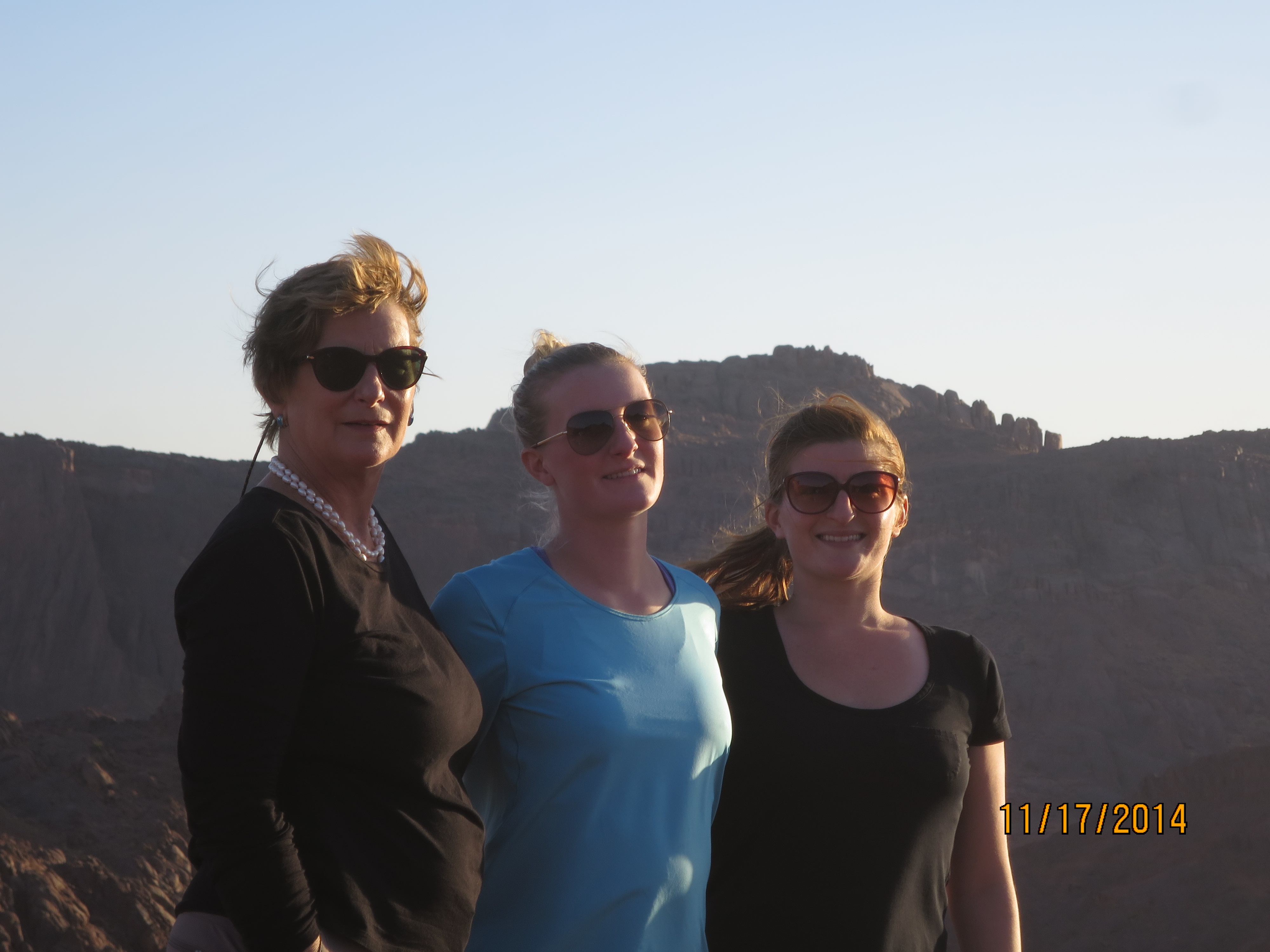
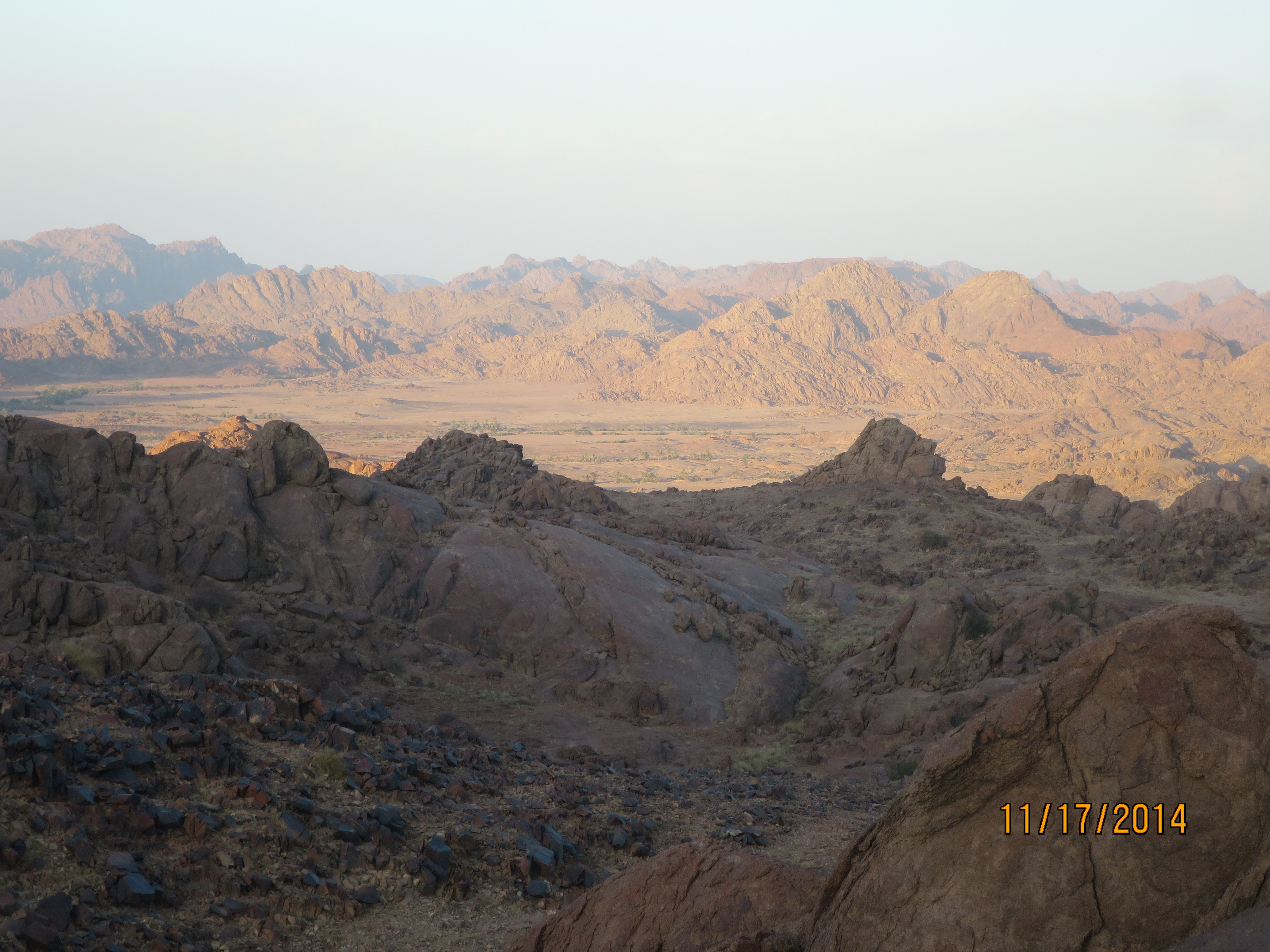
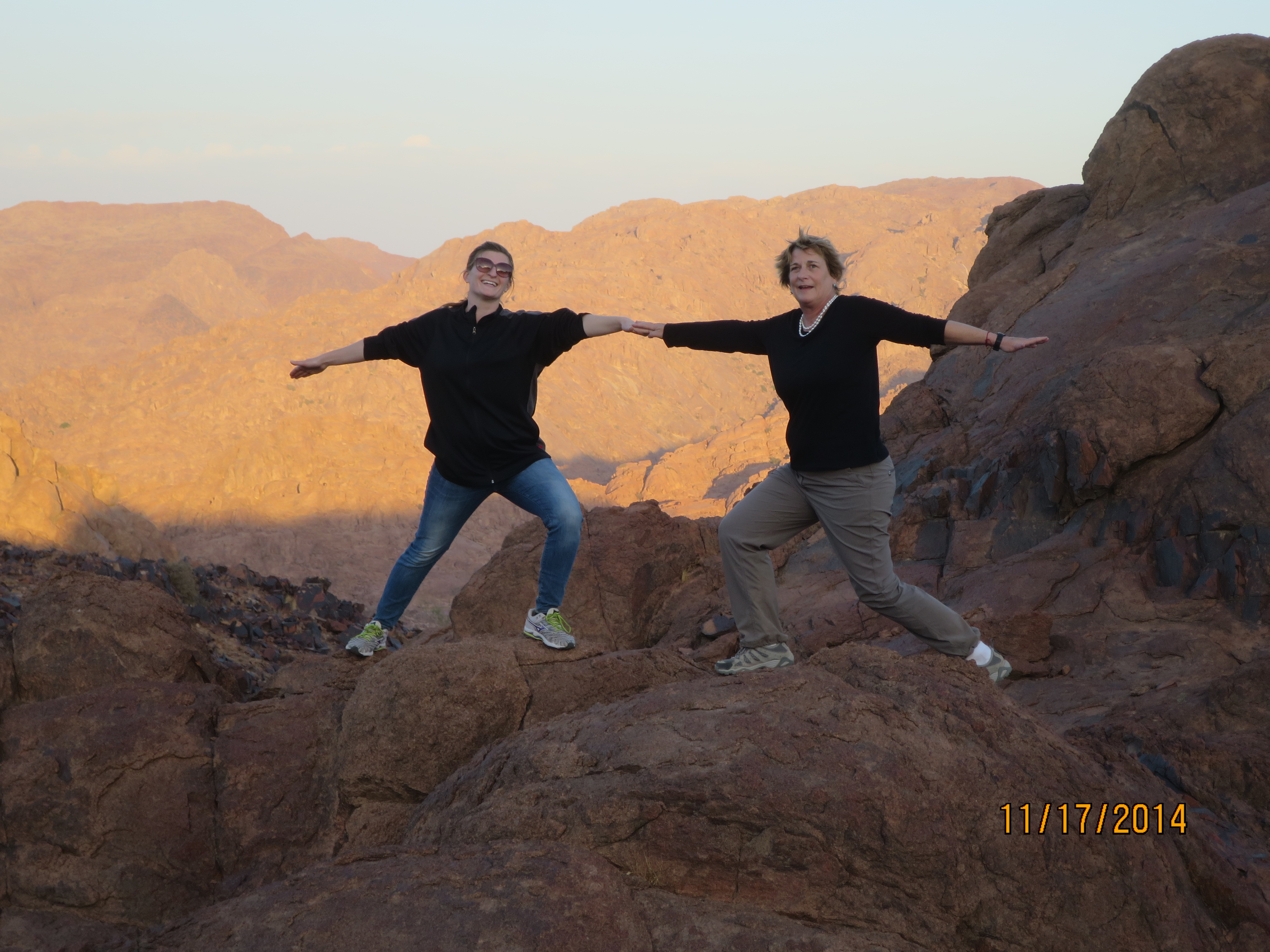
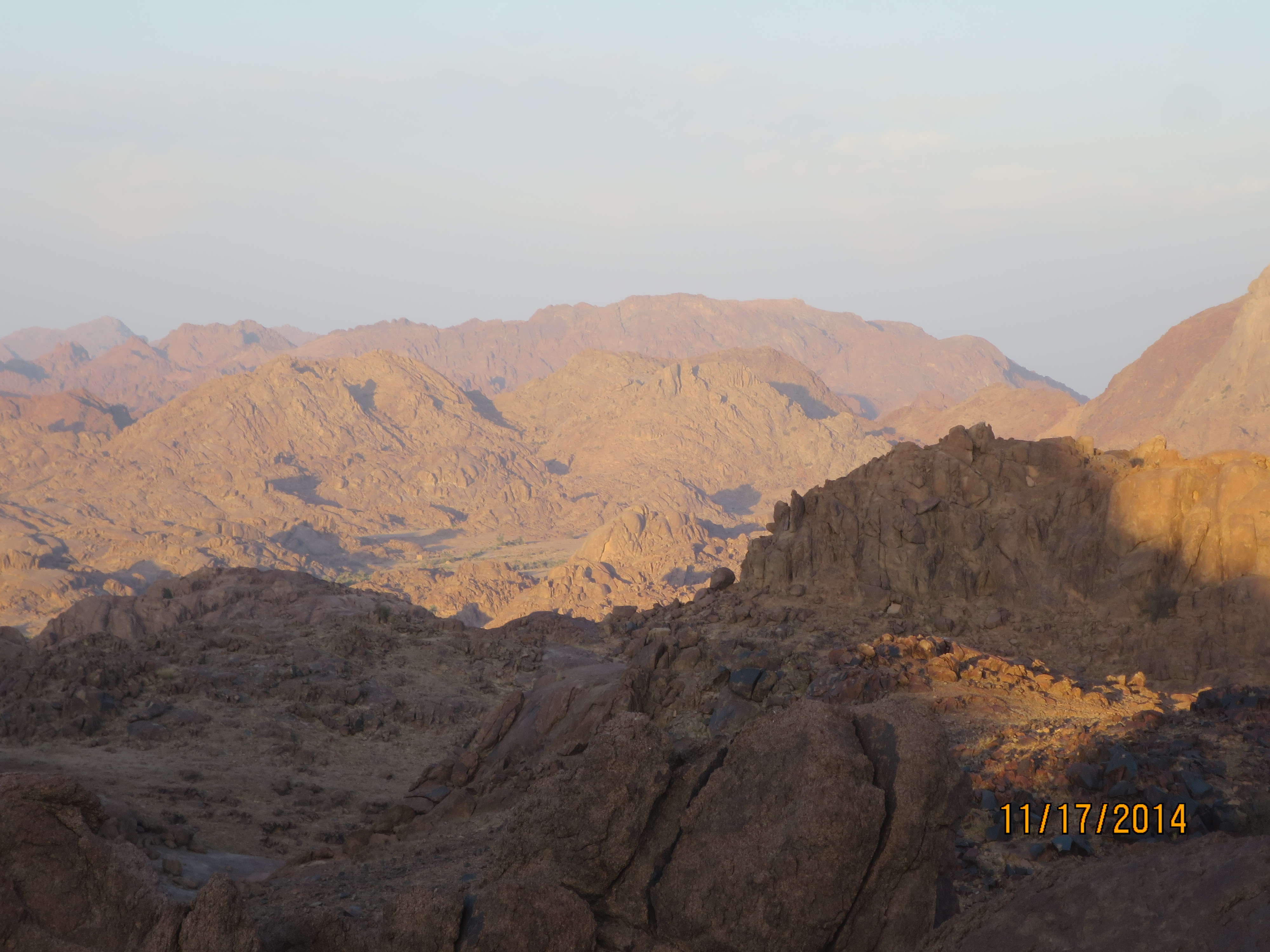
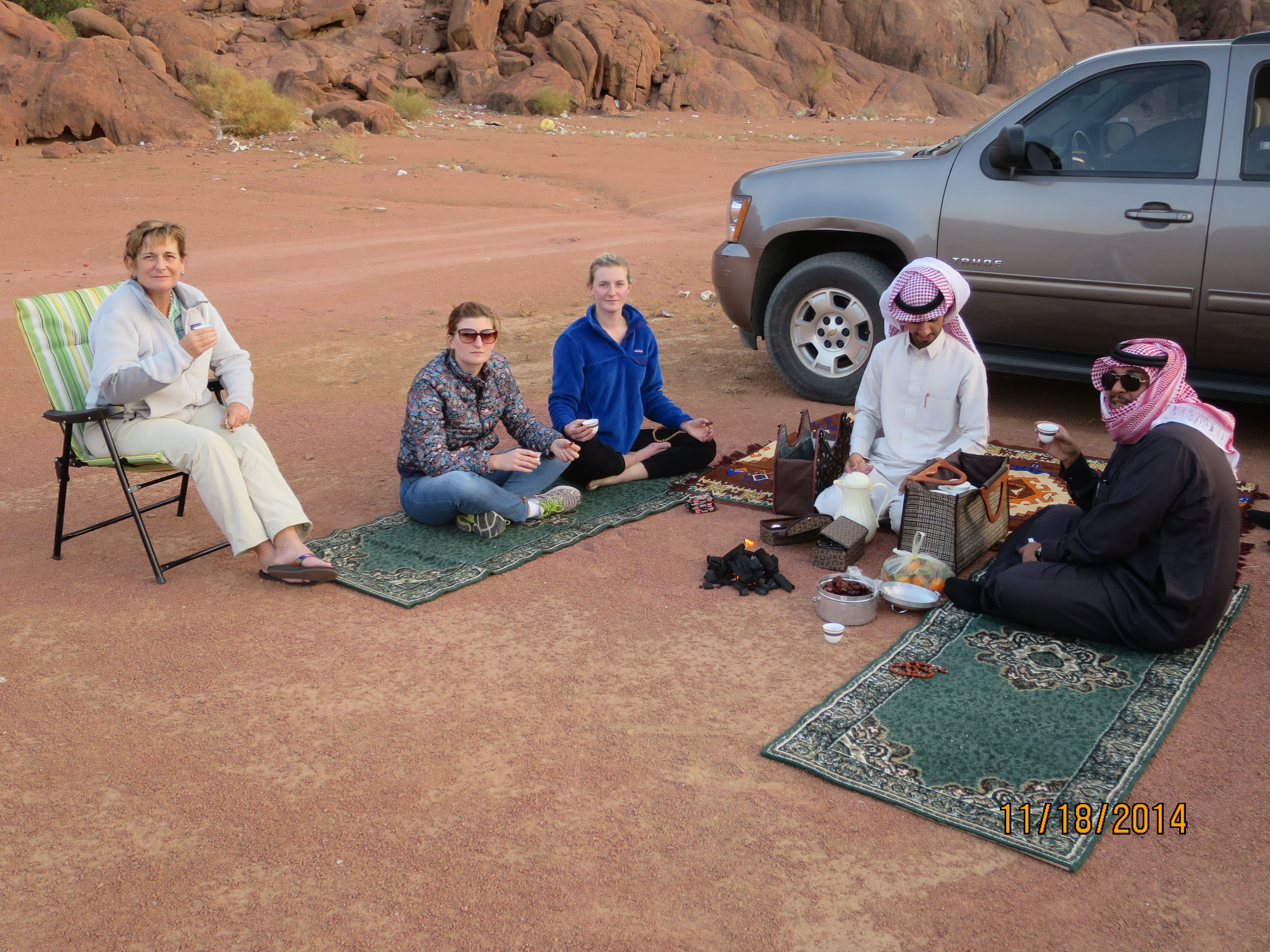
Wow ,what great memories and to have it al documented like tis is a gift for all of you .
Bob, Is that Wahbah Crater? We camped there in the ’90s with several other families. Kids played wiffle ball on the salt bottom. Hope you have a happy festive season!! Jane and Rob